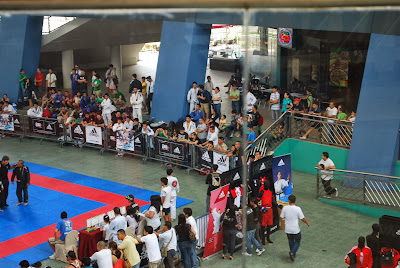In legal parlance, one who has personal knowledge of an event-that is, with opportunity to use either one of his normal senses, may be called as an ordinary witness. On the hand, one who has no personal knowledge may be called also as a witness to testify in his capacity as an expert witness. For example, a doctor may be called to testify on his expert view of a particular medical event, without personally witnessing such event.
These types of witnesses are acceptable in establishing the truth.
Considering that the present preachers of the "Word", e.g, Judaism, Catholicism, Christianity, Islam, etc, were not present before Christ departed 2000 years ago, then all them are professing to be "expert" witnesses.
Now, let us test their expertise on the "Word" by citing a simple verse:
So, what is then the purpose of the statues, pictures, images, to allegedly reflect the "word", which are being expressly prohibited?
Looking at another perspective, the "Word", as a communication process, is composed of three participants, to wit; 1) Sender, 2) Messenger and the 3) Receiver. These are the three major characters in the "Word". The intention of the process is to facilitate the exact message to reach the intended receiver.
Christ, as a messenger, told his apostles:
For detailed discussions on the topic, click to "WORDatTheNet"
These types of witnesses are acceptable in establishing the truth.
Considering that the present preachers of the "Word", e.g, Judaism, Catholicism, Christianity, Islam, etc, were not present before Christ departed 2000 years ago, then all them are professing to be "expert" witnesses.
Now, let us test their expertise on the "Word" by citing a simple verse:
"Do for others what you want them to do for you: this is the meaning of the Law of Moses and of the teachings of the prophets” (Matthew 7:12, TEV)Above verse is admittedly a message. But what do you notice from it? Is it not that you are looking at the words? Is the image or statue or picture of any person manifesting in the words? No.
So, what is then the purpose of the statues, pictures, images, to allegedly reflect the "word", which are being expressly prohibited?
Looking at another perspective, the "Word", as a communication process, is composed of three participants, to wit; 1) Sender, 2) Messenger and the 3) Receiver. These are the three major characters in the "Word". The intention of the process is to facilitate the exact message to reach the intended receiver.
Christ, as a messenger, told his apostles:
16I will ask the Father, and he will give you another helper, who will stay with you forever. 17He is the Spirit, who reveals the truth about God. The world cannot receive him because it cannot see him or know him. But you know him, because he remains with you and is in you. (John 14:16-17,TEV)When Christ departed, were the angels or Mother Mary or Virgin of Fatima or the Archbishops or the Pope promised to be his witnesses "to the ends of the earth" forever? Also, can we consider the present preachers as real "expert" witnesses?
25I have told you this while I am still with you. 26The Helper, the Holy Spirit, whom the Father will send in my name, will teach you everything and make you remember all that I have told you.(John 14: 25-26,TEV)
8But when the Holy Spirit comes upon you, you will be filled with power, and you will be witnesses for me in Jerusalem, in all of Judea and Samaria, and to the ends of the earth. 9After saying this, he was taken up to heaven as they watched him, and a cloud hid him from their sight. (Acts 1:8-9,TEV)
For detailed discussions on the topic, click to "WORDatTheNet"

No comments:
Post a Comment